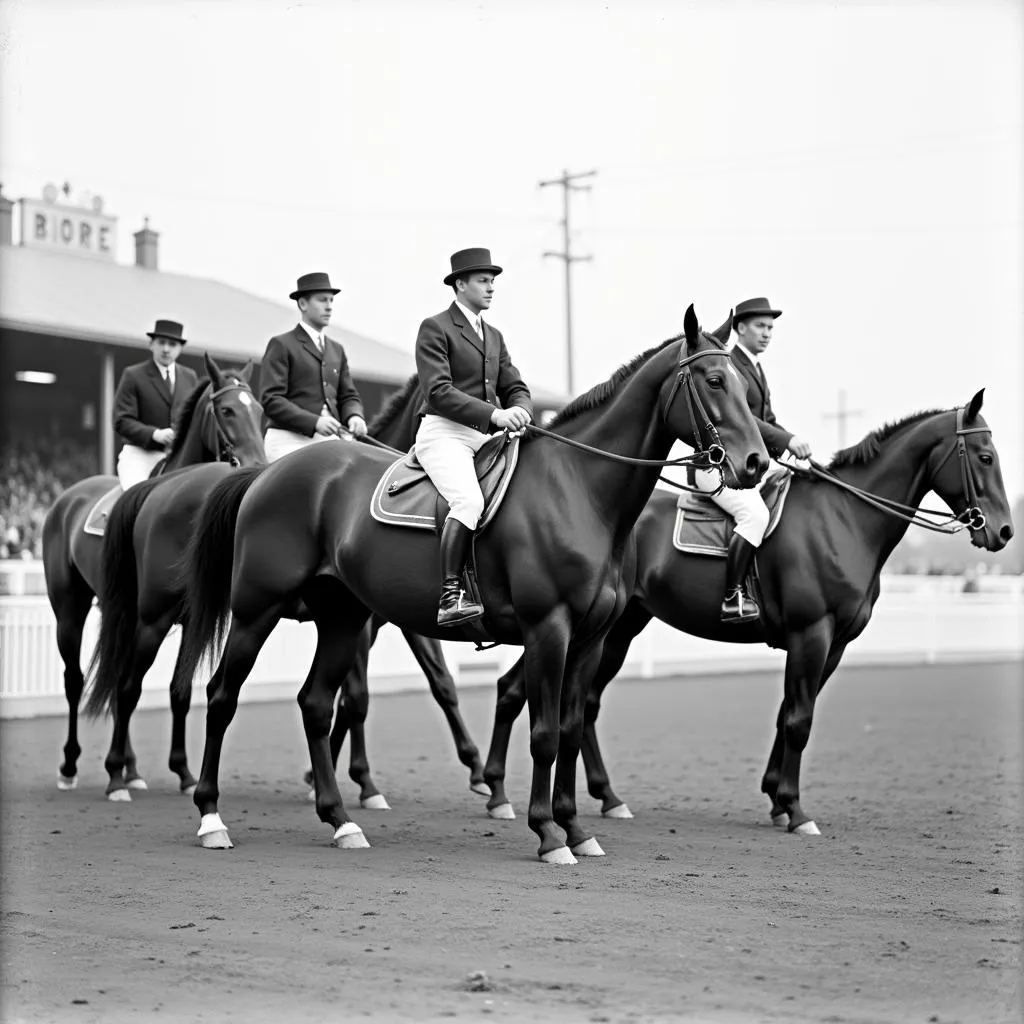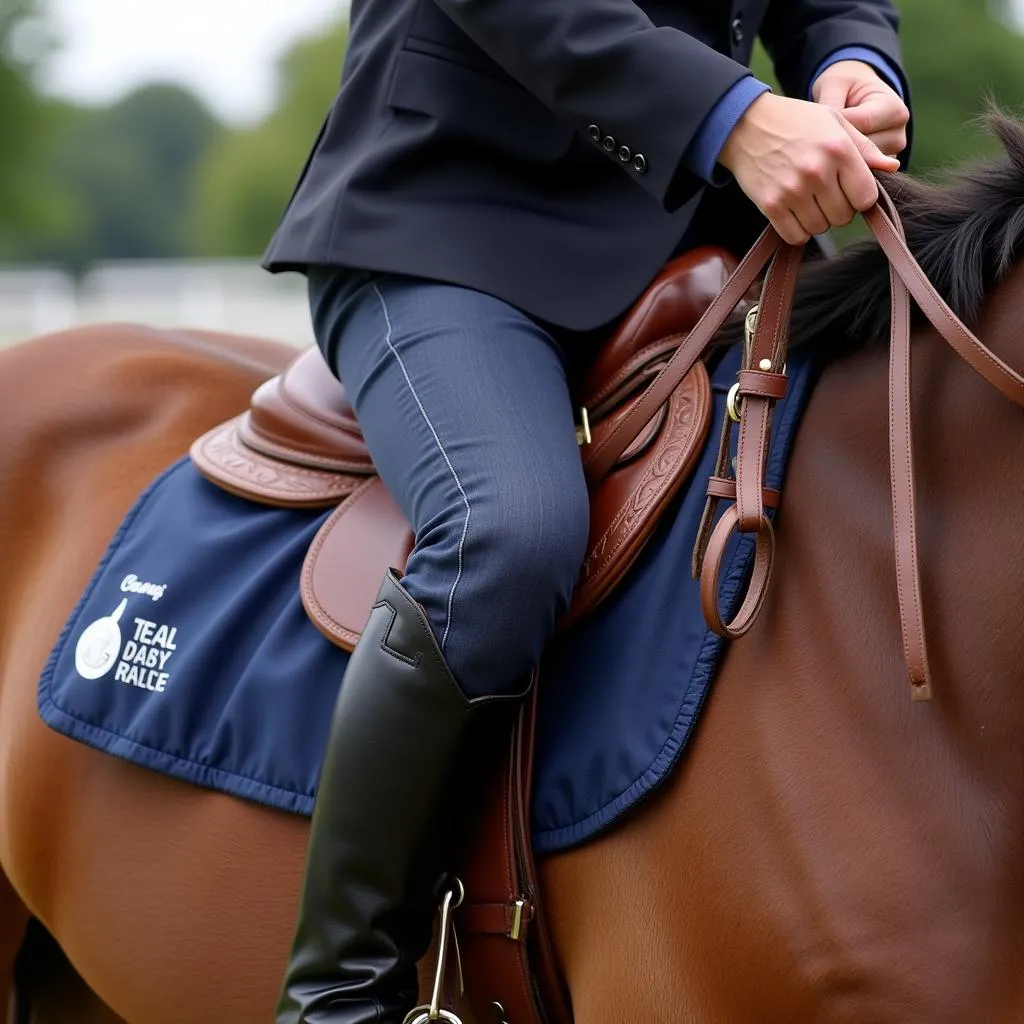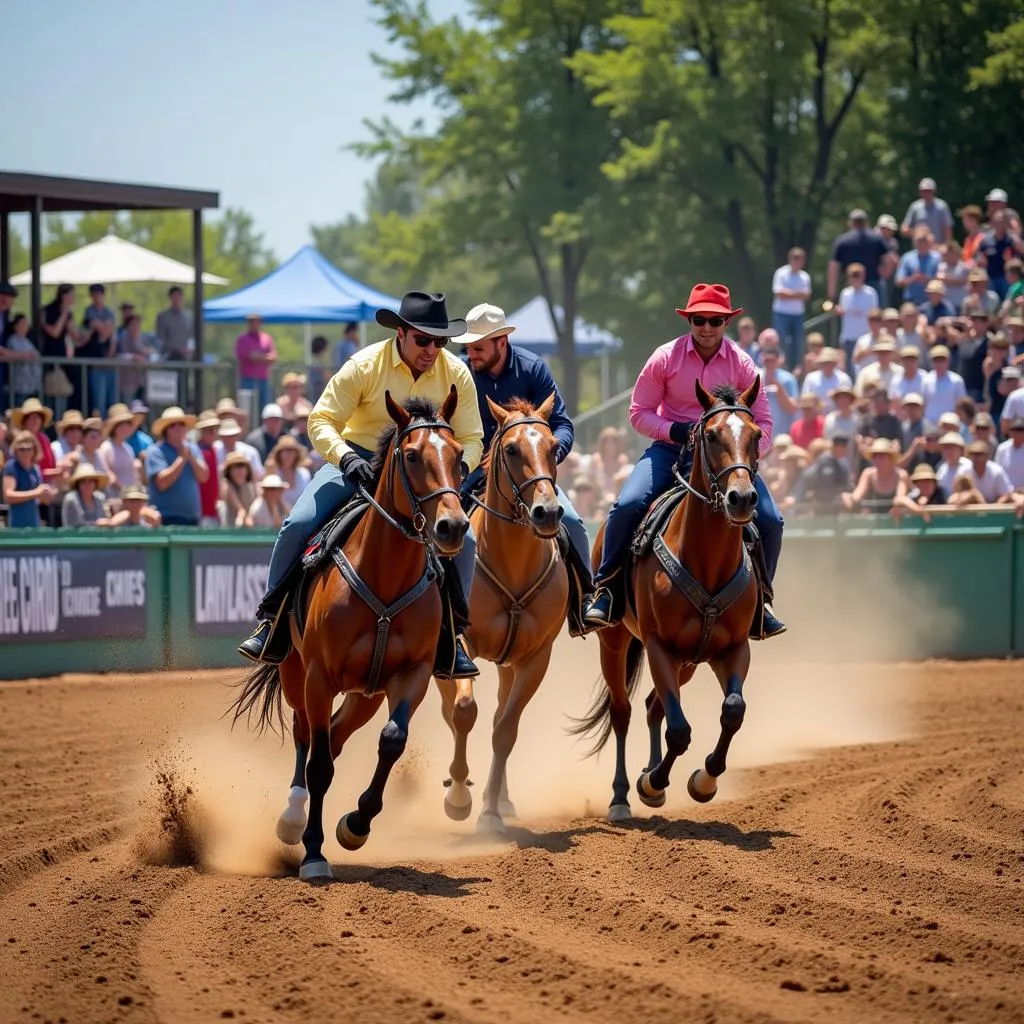Saddle Horse Racing, a thrilling equestrian sport, showcases the grace, athleticism, and partnership between horse and rider. Unlike other forms of horse racing, saddle horse racing focuses on the horse’s gait, presence, and overall performance rather than pure speed. This beginner’s guide will delve into the captivating world of saddle horse racing, covering its history, different disciplines, key elements, and more.
A Brief History of Saddle Horse Racing
 American Saddlebred horse racing origins
American Saddlebred horse racing origins
Saddle horse racing has its roots in the United States, particularly with the development of the American Saddlebred horse breed in the late 18th century. These horses were bred for their smooth gaits, elegant appearance, and calm temperament, making them ideal for riding and showcasing. As the breed gained popularity, competitions emerged to highlight their unique qualities, laying the groundwork for saddle horse racing as we know it today.
Understanding the Different Disciplines
Saddle horse racing encompasses various disciplines, each with its own set of rules and judging criteria. Some of the most popular disciplines include:
-
Five-Gaited: Horses compete in five gaits: walk, trot, canter, slow gait (a four-beat lateral gait), and rack (a fast, flashy four-beat gait).
-
Three-Gaited: Similar to five-gaited, but horses only compete in three gaits: walk, trot, and canter.
-
Fine Harness: Horses pull a lightweight cart called a “fine harness buggy,” judged on their performance, manners, and the elegance of the turnout.
-
Pleasure: This discipline emphasizes the horse’s suitability as a pleasure riding horse, with judges looking for a smooth ride, good manners, and a willing disposition.
Key Elements of Saddle Horse Racing
 Saddle horse racing equipment and attire
Saddle horse racing equipment and attire
Several key elements contribute to a successful saddle horse racing performance:
1. Horse Gaits: The foundation of saddle horse racing lies in the horse’s ability to perform specific gaits with precision, smoothness, and animation. Judges assess the quality, correctness, and brilliance of each gait.
2. Presence and Conformation: Saddle horses are renowned for their elegant appearance. Judges evaluate the horse’s conformation, overall presence, and how well they carry themselves.
3. Rider Skill and Equitation: The rider plays a crucial role in showcasing the horse’s abilities. Judges consider the rider’s equitation, use of aids, and ability to maintain a harmonious partnership with the horse.
4. Showmanship and Presentation: Saddle horse racing is as much about presentation as it is about performance. Horses are often meticulously groomed, with their manes and tails braided and adorned. Riders typically wear traditional attire, adding to the overall elegance and spectacle of the sport.
Saddle Horse Racing: More Than Just a Competition
Beyond the thrill of competition, saddle horse racing fosters a deep bond between horse and rider. The process of training and competing together requires trust, communication, and mutual respect.
“The beauty of saddle horse racing lies not just in the athleticism but also in the partnership,” says renowned horse trainer and judge, [Expert Name]. “It’s about showcasing the horse’s natural talents while working together in perfect harmony.”
 Saddle horse racing competition arena
Saddle horse racing competition arena
Conclusion
Saddle horse racing offers a captivating blend of athleticism, tradition, and showmanship. From the precise gaits of the horses to the elegant attire of the riders, this equestrian sport is a testament to the dedication and passion of those involved. Whether you’re a seasoned enthusiast or a curious newcomer, exploring the world of saddle horse racing is sure to be an enriching experience.
FAQs About Saddle Horse Racing
-
What is the difference between saddle horse racing and thoroughbred racing?
Saddle horse racing focuses on gait, presence, and overall performance, while thoroughbred racing emphasizes speed. -
How are saddle horses judged?
Horses are judged on their gaits, presence, conformation, and the rider’s skill and showmanship. -
What are the different gaits in saddle horse racing?
Common gaits include the walk, trot, canter, slow gait, and rack. -
Where can I watch saddle horse racing?
Competitions are held throughout the year at various equestrian centers and showgrounds. -
How can I get involved in saddle horse racing?
You can start by researching local equestrian centers that offer lessons and training programs.
Need assistance? Contact us 24/7:
Phone: 0772127271
Email: [email protected]
Address: QGM2+WX2, Vị Trung, Vị Thuỷ, Hậu Giang, Vietnam.
We’re here to help!